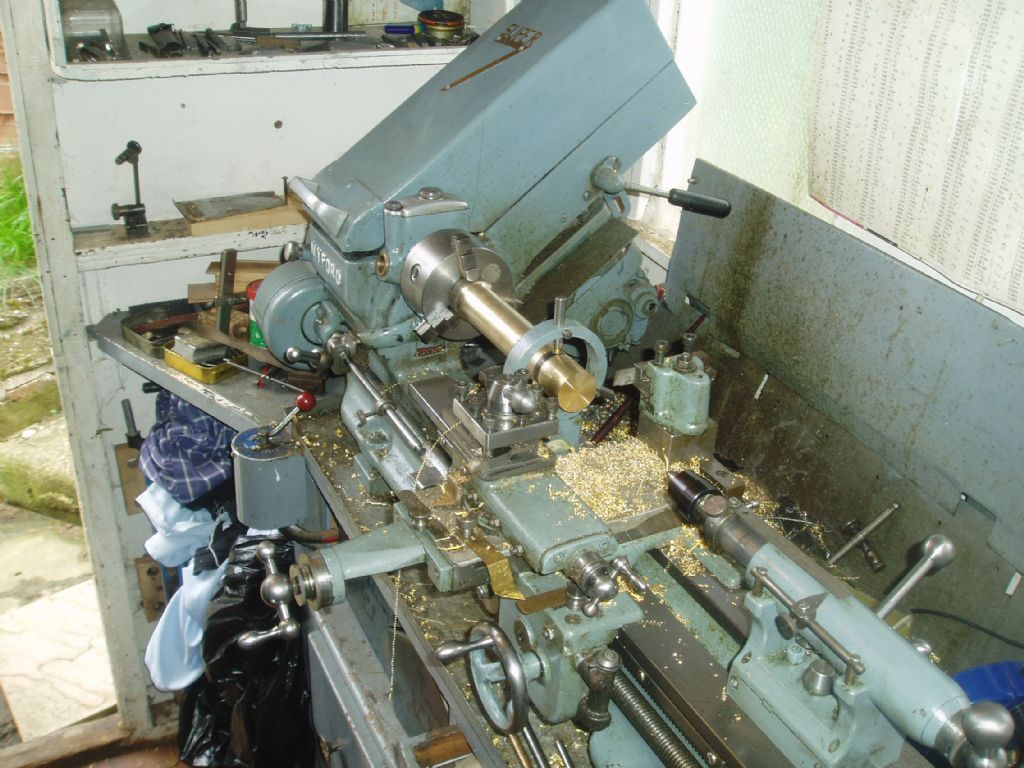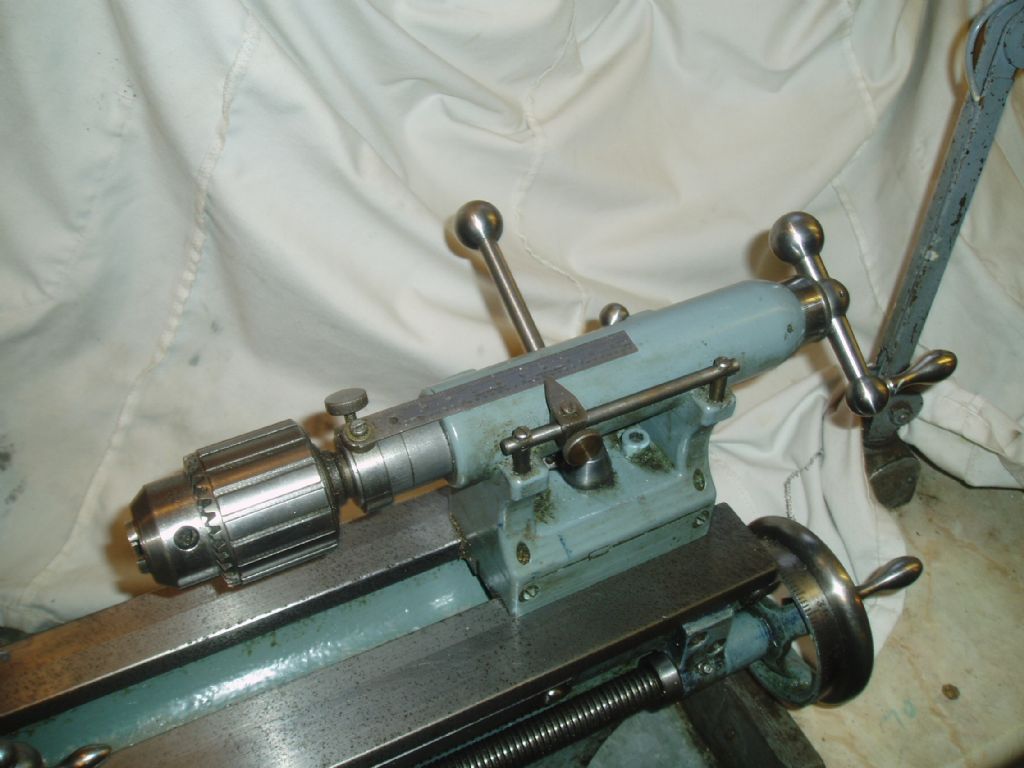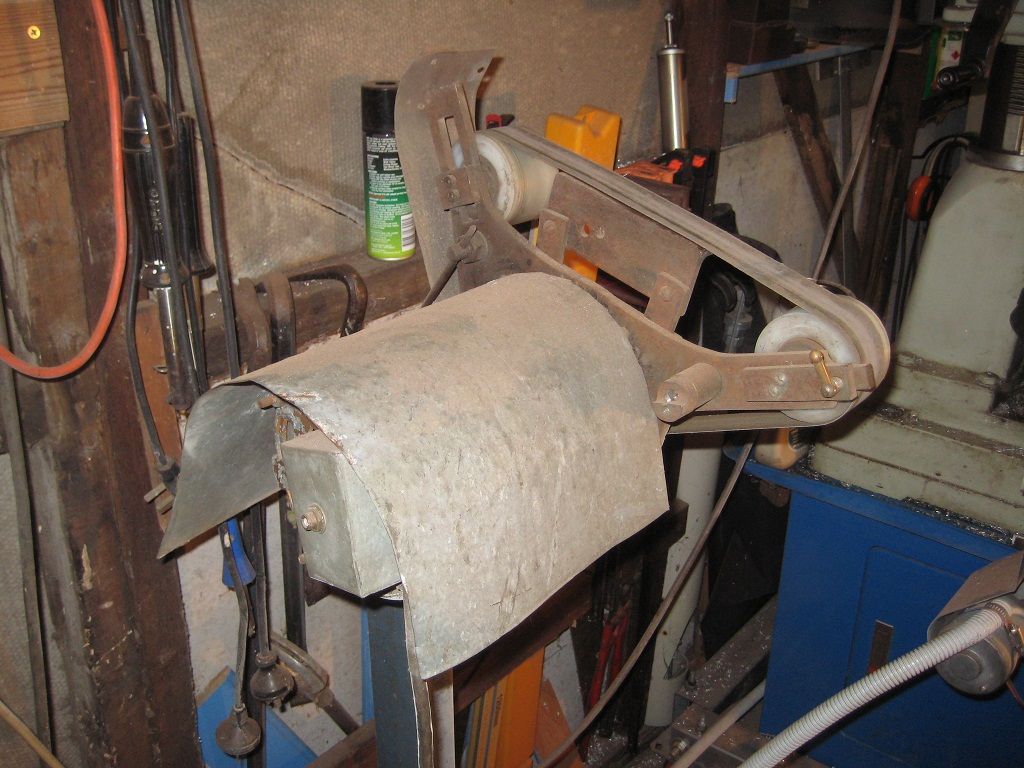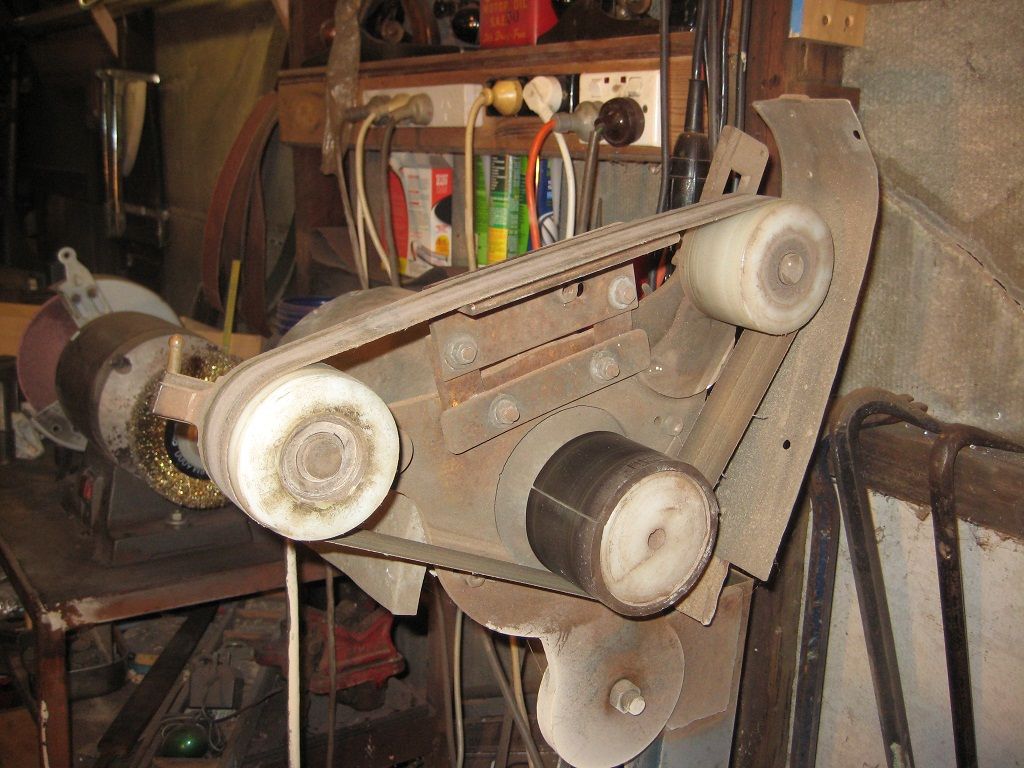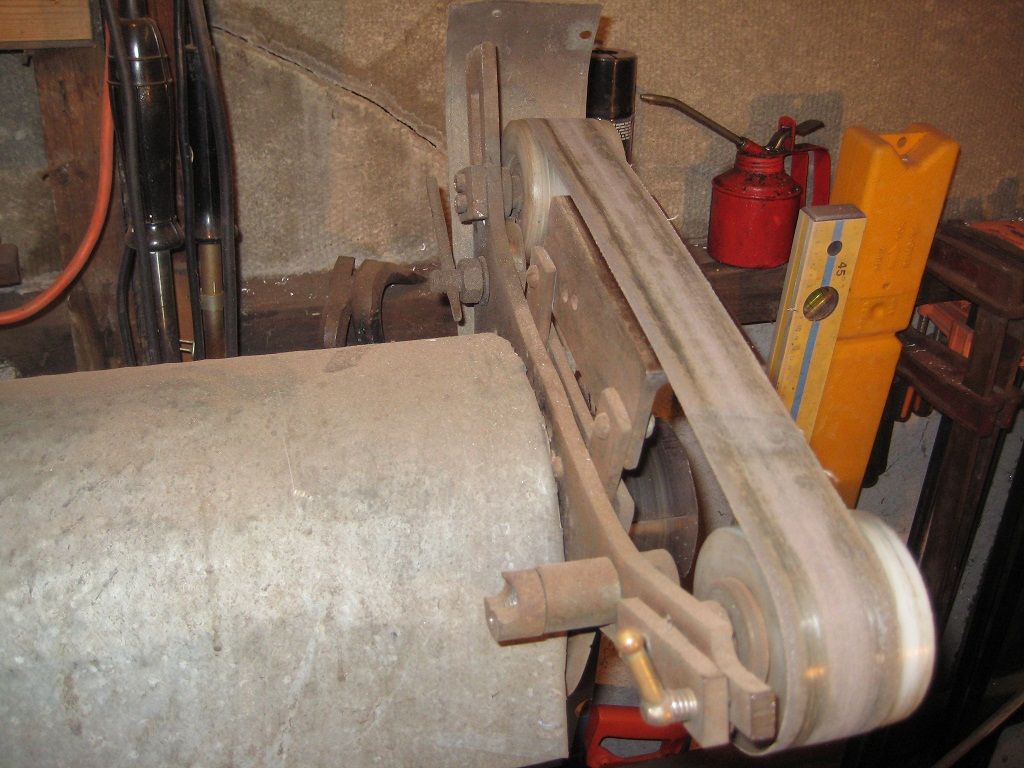I built my first wood lathe when I was eighteen. The head stock was a piece of water pipe that I had bored to take bearings. The spindle was from a steering colum that I found at the tip. The bed, a lump of 1200mm x 100mm wide channel came from the wame place. I chain drilled and filed a slot for most of the length of the bed for the banjo.
A kind neighbour lent me his stick welder and with that and some bits of scrounged plate I made up the tail stock and banjo.
It worked quite well as everything was turned between centres there was no real problem with accuracy.
I used it to make up fancy pillars that became sort of plantation era house front jewelery boxes which I then sold.
I left both the woman I was engaged to and the lathe in Portland in 1979 and move back to Melbourne to eventually marry her cousin and to buy a ready built lathe or two.
I built a three wheel linisher next, in about 1988. This time I relieved someone of a piece of 3/8 barbecue plate and cut it out with my oxy.
The pins on which two of the wheels are mounted are bits of car stearing column, again found at the tip and turned up on an Emco Unimat SL.
I bought some 60mm nylon and paid a six pack to a bloke at Qualos to bore it out for me to take bearings. I cut out bits and peices with the oxy, chain drilling and hack saw. I filed and draw filed bits that I thought should be flat and ground the edges and other bits with the bench grinder and a nine inch angle grinder.
The cam which is used to tension the belt was my piece d resistance. I am still very proud of it. I scribed concentric circles with dividers and then plotted the curve, cut it with the oxy and finish ground it with the bench grinder.
The motor is a three speed 3/4 HP that came out of a washing machine from the days when they put in fully enclosed motors.
It took me several weeks to build and I have to say it is one of the most satisfying bits of stuff I have manufactured. Next to my cordless drill, it is the single most used tool in the workshop.
I have to say that I have taken stock of my skills and that with the exception of the linisher, I am not really up to the task. I bought machine tools in order to overcome my short comings. They have been every bit as successfull as I hoped they would be so thank you, but I think I will decline your invitation and continue with machine tools.
As I once read and was offnded by for a short time in Router magazine, “If you cant use a power tool for the job its not worth doing.
Edited By Lawrie Alush-Jaggs on 04/05/2011 14:16:43
Ian S C.


